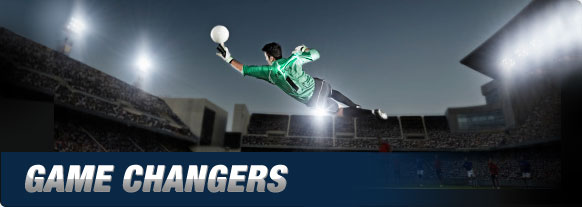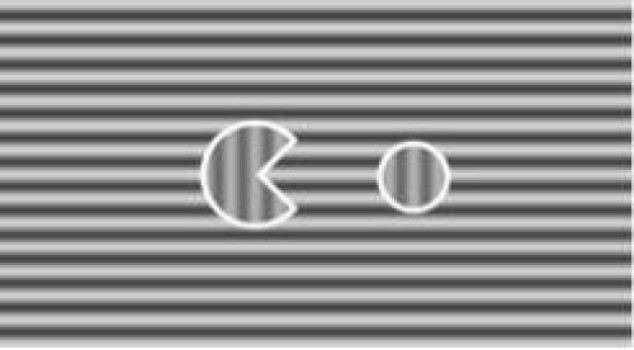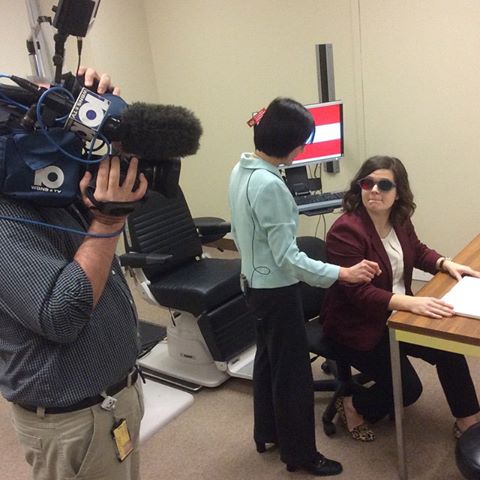BTN.com staff, BTN.com staff, January 22, 2015

A series that covers the true revolutionaries, Game Changers explores how innovators from Big Ten universities - students, faculty and alums - are inventing or reinventing their chosen fields.
Video games don?t have a reputation for being an optimal use of one?s time. But a professor at The Ohio State University has found that video games that employ a two-eye treatment system can help people who have ocular (i.e., eye) disorders after just a few minutes of playing them.
A trio of scientists, including Teng Leng Ooi, professor of optometry at Ohio State, have developed video games that can improve vision for people with issues such as lazy eye. Clinically referred to as amblyopia, this condition affects 2 to 3 percent of the population and is the result of a poorly developed neural pathway from one eye to the brain because that eye is sending blurry images. The ?lazy? one thus creates poor depth perception in binocular vision.
Ooi worked with co-authors Zijiang He of the University of Louisville and Yong Su of Salus University in Pennsylvania, and she presented their findings at Neuroscience 2014, the annual meeting of the Society for Neuroscience.
The experimental technique developed by Ooi and her colleagues recalibrates two relationships between a pair of eyes: the excitatory interaction (when the eyes see similar visual images) and the inhibitory interaction (when the two eyes see dissimilar visual images).
 These video games - one of which bears a decided resemblance to Pac-Man - use a push-pull method of retraining the weaker eye. The current standard procedure involves patching the dominant eye in order to completely disable it during the exercise, forcing the weaker one to compensate.
These video games - one of which bears a decided resemblance to Pac-Man - use a push-pull method of retraining the weaker eye. The current standard procedure involves patching the dominant eye in order to completely disable it during the exercise, forcing the weaker one to compensate.
?To achieve optimal 3-D vision, the two eyes should be balanced,? Ooi said. ?The video game is aimed at recalibrating the balance between the two eyes.?
While playing the game, patients use 3-D glasses with red-green lenses to see the images, with the dominant eye seeing only horizontal lines. In contrast, the weak eye sees vertical, horizontal and diagonal lines. Games are played with the lines in the background, causing different orientation visuals that require harder functions for the weak eye.
?When the brain ?sees? the image from the weak eye more frequently, the connection between the weak eye and the brain will be strengthened and the efficiency of information transmission between the weak eye and the brain become more efficient,? Ooi said. ?As the saying goes, practice makes perfect.?
[btn-post-package]The games are designed to get more difficult as the weak eye grows stronger. Unlike eye-strengthening exercises that involve a patch, the video game training lasts only a few minutes. But it stimulates more brain mechanisms in that short amount of time. Plus, it?s far more entertaining than training with a patch, which requires patients to focus on still pictures or pattern-less movements of images for as long as 90 minutes.
The research points to long-term benefits. The scientists have seen positive results from these video games last for up to eight months, and they?re now trying to figure out if they can make those improvements can last even longer - or be made permanent.
?We have conducted follow-up testing of our subject?s months after the training ended and found that effects are retained,? Ooi said. ?It is interesting to note that our subjects were adults. Adult brains are less modifiable than children?s brains. Therefore, being able to demonstrate long-term plasticity in adults gives hope to [those] who have binocular visual problems.?







 See what's coming up live on B1G+ every day of the season at BigTenPlus.com.
See what's coming up live on B1G+ every day of the season at BigTenPlus.com. 